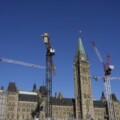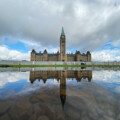Welcome to Need to Know, The Hub’s twice-weekly roundup of expert insights into the biggest economic stories, political news, and policy developments that Hub readers need to be keeping their eyes on.
What’s holding young Canadians back? A lot
By Matt Spoke, a contributor to Project Ontario and a Toronto real estate developer
In 1960, nearly 60 percent of Canadians were married and owned a home by the age of 30. By 2020, that number had fallen to just 15 percent. This isn’t just a marginal change. This represents a total collapse of what used to be considered a normal life trajectory.
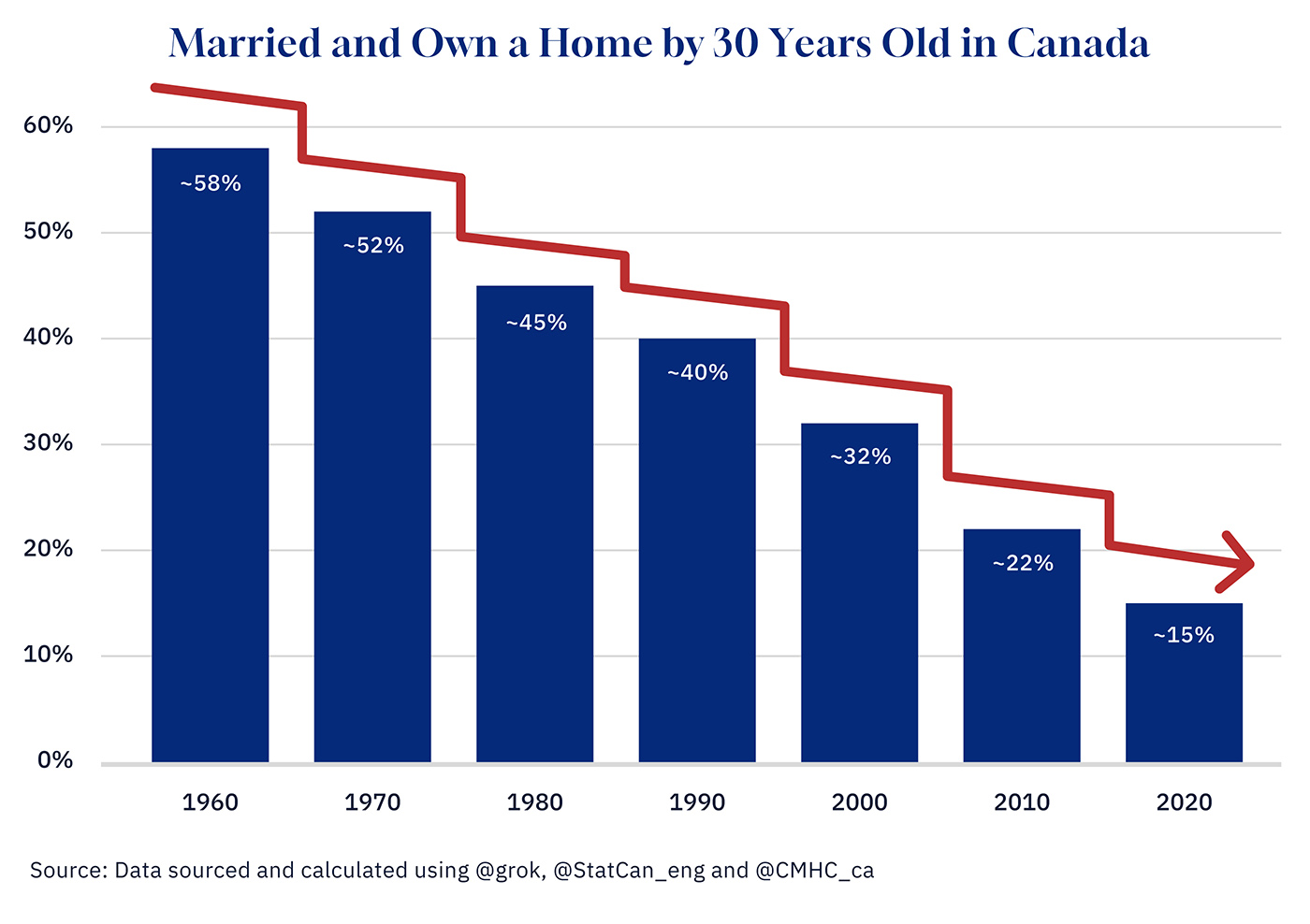
Graphic credit: Janice Nelson
The reasons are structural. Housing costs have outpaced incomes for over two decades. Urban planning policies (from exclusionary zoning to costly development charges) have made it harder and more expensive to build homes where people want to live. Labour markets have shifted too: the transition from school to work has become longer, riskier, and less linear. Student debt is up. Wages are flat. Entry-level jobs that once launched careers have been replaced by precarious service work or credential creep.
Add it all up, and young Canadians are stuck in a holding pattern. They’re not less ambitious. They’re not unwilling to work. They’re just facing a system that no longer rewards effort the way it once did.
And yet political responses remain timid. Policies treat symptoms instead of causes: a small tax credit here, a pilot program there. Meanwhile, the institutions most responsible for this decline—housing regulation, labour policy, higher education, childcare systems—remain largely untouched.
This is the real generational divide in Canada today. Not culture, but opportunity.
If Prime Minister Mark Carney wants to restore economic confidence, it has to start here, with bold reforms that tackle the structural barriers facing young Canadians. And if Doug Ford, premier of Canada’s largest province, wants to secure a legacy beyond short-term slogans, he’ll need to confront the economic and regulatory failures that are hollowing out Ontario’s middle class.
That’s why some of us launched Project Ontario: to start asking harder questions and offering better answers.
Because the most important metric of success for any province or country isn’t GDP. It’s whether the next generation can build a life.
Danielle Smith’s critics owe her an apology on tariffs and trade
By Anthony Koch, managing principal of AK Strategies
Mark Carney’s retreat on retaliatory tariffs confirms what Danielle Smith was saying all along: that Ottawa’s approach was performative, economically reckless, and divorced from the realities of those who would bear the brunt of it.
When she warned that tariffs would punish Canadian farmers, ranchers, and exporters more than they would pressure foreign governments, she was painted as reckless or unserious. Yet months later, the supposed master of international finance has admitted that the federal government’s bluster could not survive contact with economic reality. It is a vindication not just of her specific criticism, but of her broader instinct that Ottawa’s policies are too often designed for short-term political theatre rather than long-term prosperity.
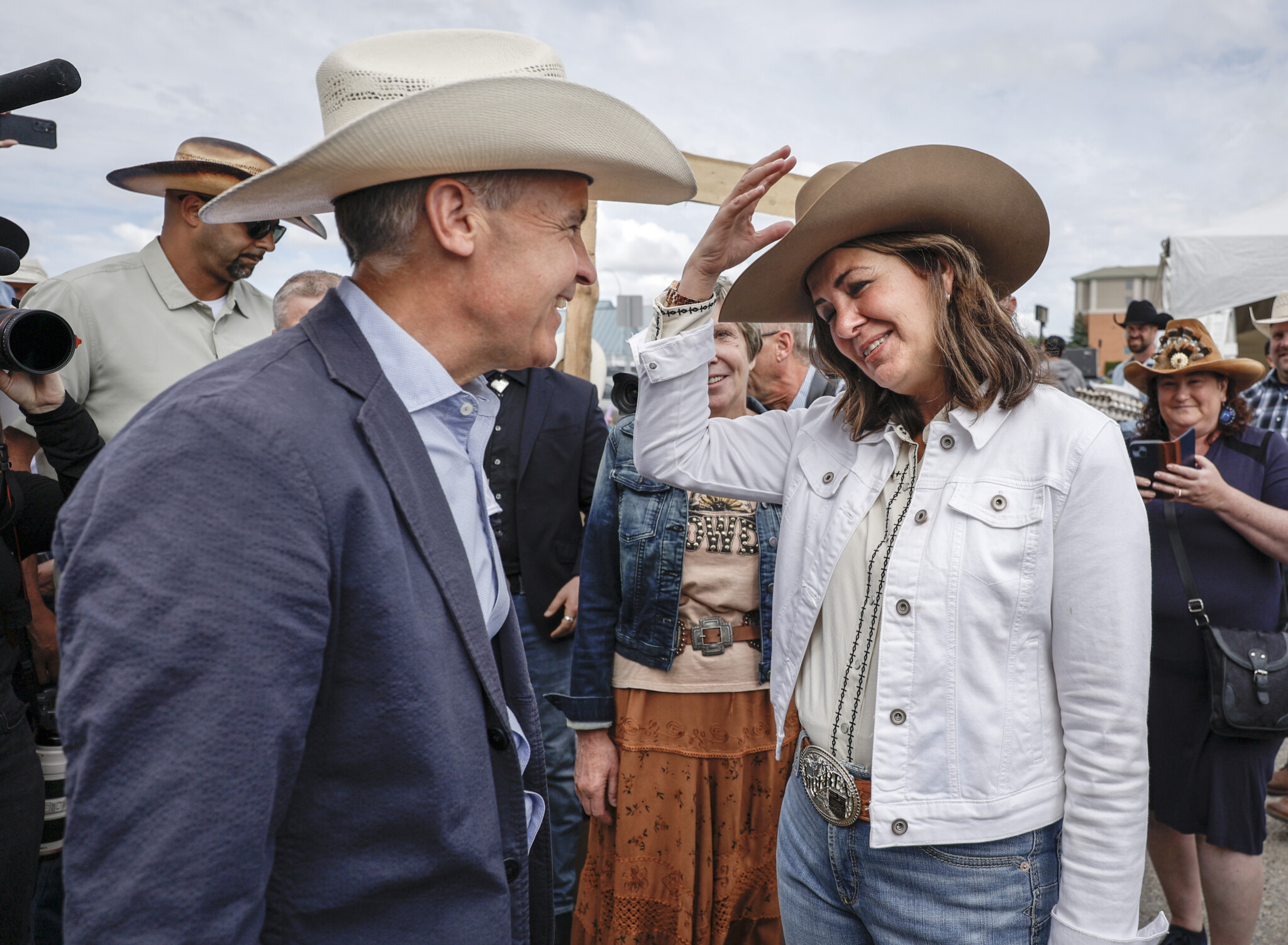
Prime Minister Mark Carney, left, meets with Alberta Premier Danielle Smith as the pair attend a Stampede breakfast in Calgary, Alta., Saturday, July 5, 2025. Jeff McIntosh/The Canadian Press.
This does not mean Smith had a detailed, technocratic plan to replace tariffs. What it does mean is that she grasped a basic truth Carney and his circle ignored: Canada cannot afford self-inflicted wounds. Our producers, already facing competitiveness challenges, cannot be used as props in Ottawa’s geopolitical stagecraft. The federal government overpromised, underdelivered, and ultimately had to admit what Smith had said from the start—that retaliatory measures carry heavier costs for us than for them.
Carney’s reversal should be seen for what it is: a tacit admission that Smith, despite being dismissed at the time, had the better judgment. The ridicule she faced was unwarranted, and an acknowledgment of that fact is due. It is not simply a question of partisan point-scoring, but of basic fairness.
Smith was right to raise the alarm. Carney was wrong to dismiss it. And Canadians are right to expect humility from those who would lecture premiers only to arrive later at the same conclusion. An apology to Smith would be a start.
An environmentalist cause for conservatives to champion
By Kelden Formosa, a political commentator and elementary school teacher
Aspen trees are the ecological workhorses of Canadian forests. They can get by with little water, grow quickly after clear cuts or wildfires, regenerate soil and slow erosion, and support moose, deer, and other herbivores. Plus, those green leaves help slow fires, as they burn much less easily than conifer needles—and they even turn a brilliant yellow-gold in fall. The one downside of aspens is their wood, which isn’t very dense and doesn’t hold as much commercial value as conifers like spruce and pine.
That’s why, after logging, many Canadian forests have historically been aerially sprayed with glyphosate, a herbicide that kills aspens and other deciduous plants while sparing most conifers. By killing broadleaf species like aspens, you reduce competition for conifer seedlings, so they grow faster than if they’d had to grow up in the shade of mixed forests.
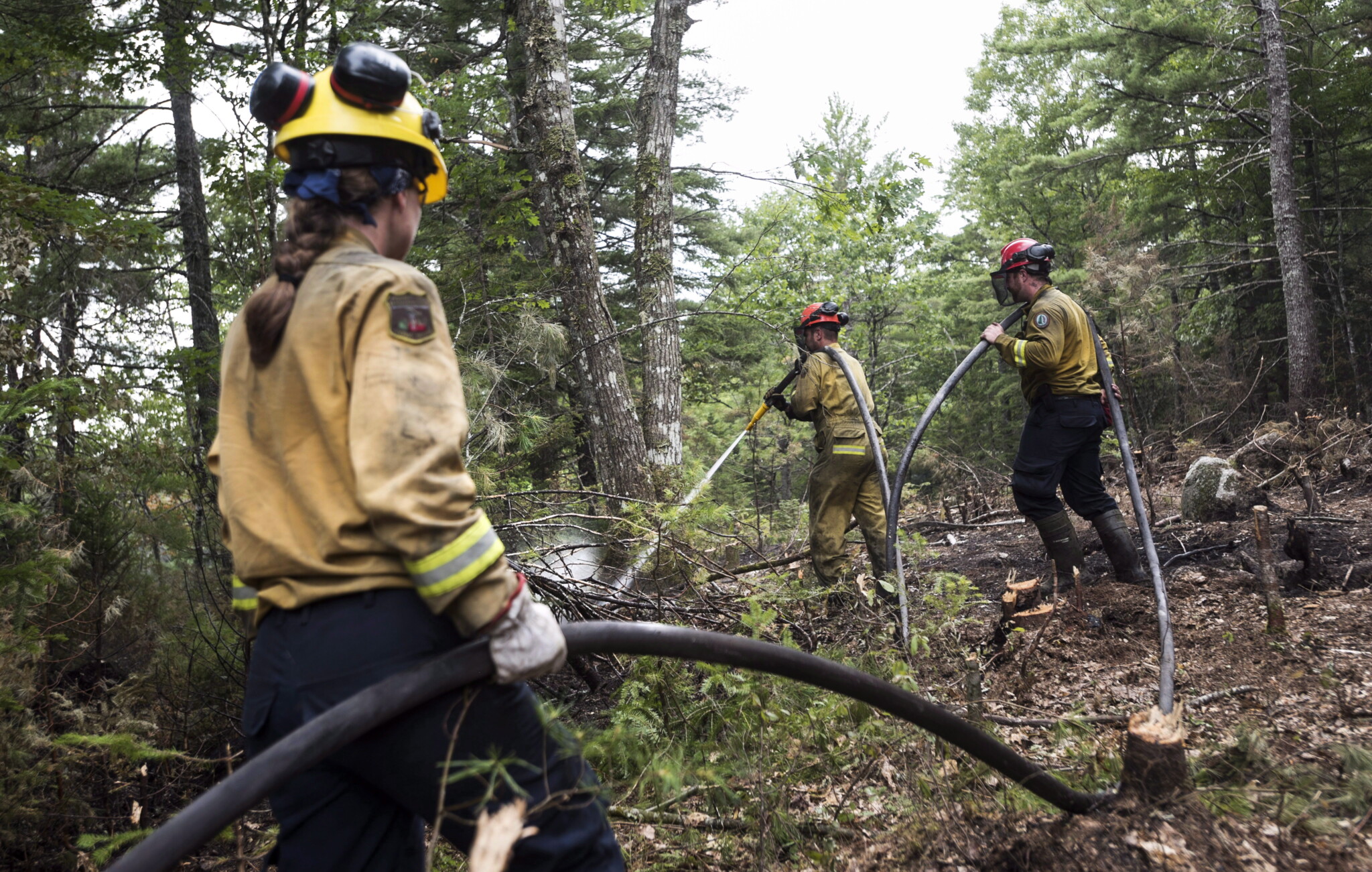
Firefighters with the Department of Natural Resources fight the Seven Mile Lake forest fire in Maitland Bridge, N.S. near Kejimkujik National Park on Thursday, August 11, 2016. Darren Calabrese/The Canadian Press.
Environmentalists and many Indigenous communities have long argued that quicker conifer growth wasn’t worth the cost of spraying, citing harms to biodiversity, possible—but contested—risks to human health, and the increased chance of a wildfire breaking out in a dry conifer monoculture than in a mixed forest that retains more moisture. Quebec banned the practice in 2001, and some other provinces have been slowly phasing it out in response.
So far, so Greenpeace. Aren’t these all the things we’ve heard for years from anti-resource voices on the Left? Yes—but an interesting consequence of the dispute over woods bans in the Maritimes is that those activists have a new set of allies on what we might call the “Freedom Convoy Right.”
For example, Jeff Evely, the ex-PPC candidate who deliberately sought a fine for breaking Nova Scotia’s woods ban, has emerged as a major critic of his province’s continued glyphosate spraying, and he’s getting a lot of support from other right-wing influencers online. They argue that the province is approving risky forest management while cracking down on zero-risk activities like walking in the forest. It’s a fair point. Ironically, Premier Houston banned nature walks, fishing, and birdwatching while allowing swaths of broadleaf forest to be killed and left as deadwood—only one of those things increases fire risk.
But there’s a deeper lesson: Canadian politics is more complicated than a simple Left-Right dichotomy. If environmentalists are smart, they’ll try to form coalitions with this new portion of the Conservative base. Maybe they don’t agree on carbon taxes, but they do agree that, in an age of wildfires, we should do everything we can to keep our forests healthy, biodiverse, and accessible.
The heirs to the Freedom Convoy may be disorganized, but they are passionate, sincere, and ready to take a stand on the issues they care about. If their energy can be harnessed toward defined policy goals, they could reshape Canadian politics—shaking up old orthodoxies and forcing politicians to consider the issues, and our forests, afresh.




